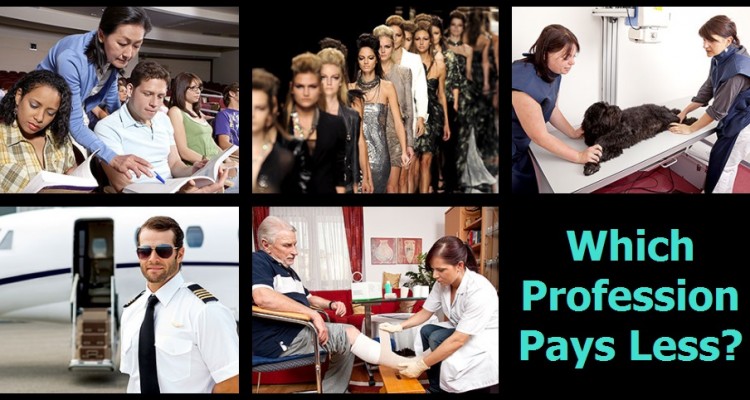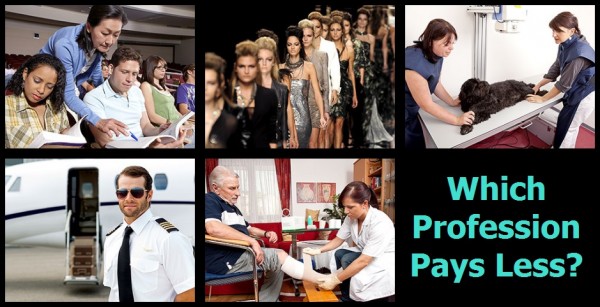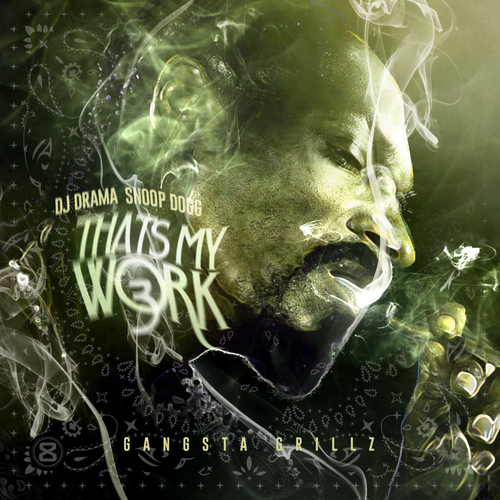Some interesting information was reported today on CNN Money. The popular source for financial news and resources made claims that fast food and retail store jobs aren’t the only ones making the bare minimum. As you know, Americans working in those industries have been fighting with the corporations and Congress to increase the national minimum wage. President Barack Obama is also pushing for an increase. But, surprisingly, there are other more difficult/hourly engaged jobs that are affected by low wages.
If you could guess which professions are also being impacted, could you? Probably not. For, some of the professions listed below were even hard for me to believe. Check out the list:
Pilots
Average annual salary: $22,400
Average hourly wage: $10.75
Becoming a regional pilot requires a tremendous amount of time, training and money. Federal rules stipulate that commercial-airline pilots have a minimum of 1,500 hours of flight experience, and the training can cost more than $100,000.
But starting salaries for full-time pilots at regional airline carriers average about $22,400, according to data from the pilot union Air Line Pilots Association. For a 40-hour workweek, that would mean these skilled professionals are taking home about $10.75 per hour.
Adjunct Professors
Average annual salary: $21,600
Adjunct professors teach the same kinds of classes as full-time, tenured faculty members at many colleges and universities. Adjuncts have advanced degrees and spend similar amounts of time grading papers and tests.
But because they are not considered full-time, adjuncts are paid far less. According to the American Association of University Professors, a 2010 survey found that their median pay is $2,700 per 3-credit-hour course. This means that even if an adjunct professor teaches between two to four classes per semester, as most tenure-tracked faculty members do, they would still only make up $21,600 per year.
By contrast, the average salary for full-time faculty members was $84,112 and the average pay for a full-time professor at a university that grants doctoral degrees was about $135,000.
Models
Average annual salary: $26,110
Average hourly wage: $12.55
Modeling sounds glamorous, and expensive: walking down coveted runways decked out in thousands of dollars of clothes, being watched by mega celebrities, getting photographed for top fashion magazines, or jet setting around the world.
What’s not to love about that, however, is that despite the 18-hour days and the huge profits they help bring in for fashion houses, models are among the country’s low-wage earners with an average of $26,110 per year, according to U.S. government data.
Home Health Aide
Average annual salary: $21,830
Average hourly wage: $10.49
The home care industry has been booming in recent decades, as more elderly Americans choose at-home care instead of nursing homes. Aides can be responsible for dispensing life-saving medication, as well as playing a vital role in ensuring access to high-quality nursing care in people’s homes.
And though their work has required more training and responsibility, home health aides’ pay remained among the lowest in the service industry. A study released by the National Domestic Workers Alliance shows nearly a quarter of home health aides earn below minimum wage.
Veterinarians
Average annual salary: $31,470
Average hourly wage: $15.13
Becoming a veterinary technician requires attending a two-year program to gain an associates degree, and veterinary technologists need a bachelor’s degree in order to perform their jobs. They draw blood samples, assist veterinarians during surgery and perform a number of medical tests on animals.
Yet they’re paid an average of about $15 an hour, according to the Bureau of Labor Statistics.




